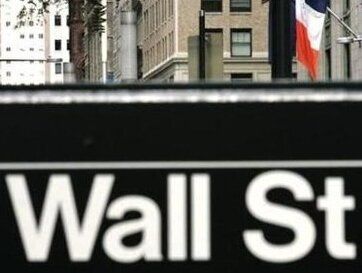
A lot has been written about the yield curve lately. Some are saying Treasuries are dropping only because of the increase in federal spending while others are saying we're simply going through a standard correction. In fact, both are correct as the undercurrents of both issues are present in the Treasury marker's recent action. But what has also been missed is the possibility that the Treasury market could also be signaling an economic recovery.
First, let's start with a bit of history. Here is a chart of the IEFs -- an ETF that tracks the 7-10 year area of the Treasury market:
This market -- the middle part of the Treasury curve -- has been in a rally since the middle of 2007. The reason is simple: this is when the problems started in our financial system. During times of stress, investors seek safety and there is nothing safer than a US Treasury bond. However, this market has started to sell-off lately. In fact, you can trace the beginnings of the recent Treasury market sell-off to early March. This is when the stock market started to rally, indicating that part of the Treasury market sell-off is in fact a reallocation of assets from less risky (Treasury) to more risky (equities).
In addition, there has also been several rallies in other more risky parts of the bond market that also indicate investors are shifting their assets into riskier bonds. For example, here is a chart LQD which tracks investment grade corporate bonds:
Notice it started to rally when the stock market did (early March). Also notice this is when the Treasury market started to sell-off. In addition, here is a chart of the junk bond market:
which shows the exact same pattern -- a rally that started with the recent equities rally and the Treasury market sell-off.
There has also been a fair amount of writing about the yield curve differential -- the difference between the 10 and 2 year Treasury bonds. Here is a chart from Calculated Risk of that difference:
Notice the last two times the difference was this high the economy was already in recovery. The reason is simple. In both situations the Fed was still cutting short-term interest rates widening the yield curve well into the expansion. Here is a chart of the effective federal funds rate starting in 1990:
Notice in both the early 1990s and the early 2000s the Federal Reserve was cutting rates well into the expansion as a way to power the economy forward. In other words, the yield curve widened because the Fed was still in a very stimulative posture. The same is true of the current Fed -- they have lowered interest rates to essentially 0% after adjusting for inflation.
So -- let's sum up so far:
1.) The longer part of the Treasury curve is selling off. BUT
2.) Other riskier assets like higher-grade corporate bonds, junk bonds and equities are rising indicating we are also seeing a reallocation of assets into riskier assets. In addition,
3.) The yield is steepening because the longer part of the curve is selling off while the shorter part of the curve is still stimulative. This is exactly what happened in the early parts of the previous two expansions.
Now let's address the final point: is the increase in federal spending and the commensurate increase in the issuance of federal securities also a reason for the sell-off in the longer part of the yield curve? It has to be a factor. In the bond world that means an increase in yields. An increase in supply = lower prices. That is simple supply and demand. However -- is this fatal? Hardly. Here is a long-term chart of the 10 year Treasury yields:
Notice we are at the tail end of a multi-decade bull market in bonds. Notice that interest rates have been dropping for the better part of 30 years. Also note that we had much higher interest rates in the 1980s -- rates between 7.5% and 10% -- and the economy still grew. In other words, for anybody to complain about interest rates rising to 5% and acting as though that were a sign of the end of the world -- it's simply a ridiculous claim.